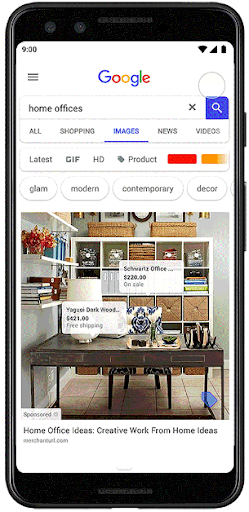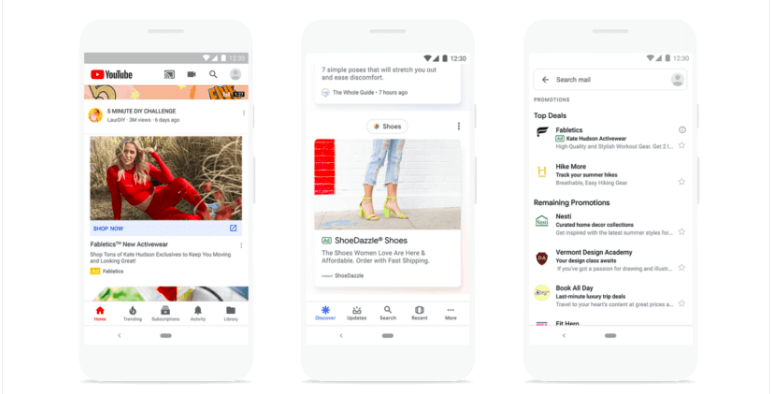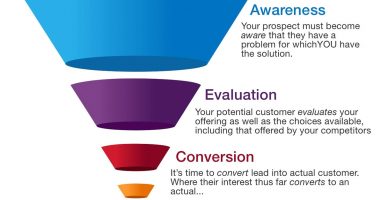
Table of Contents
- Introduction
- Algorithm Changes: Good, Bad and the Ugly
- The key takeaways from the March and June updates
- Shoppable Ads with Image Search
- Two New Google Ads Features
- Wrapping Up
Introduction
Surprises, in general, are good, but when it happens to be in the form of a Google update, leaves marketers scratching their heads. The search giant has this strange knack for secrecy where updates are dropped like bombs on unsuspecting marketers and businesses. But there was something different about the Google Core update this year. Eventually named the ‘March 2019 Google Core Update’, it was announced on social media a day before the release.
Hallelujah! ….
Said all the marketers in unison, for this was the first time Google gave them some headroom to devise a contingency plan.

While few businesses experienced an upswing in their web traffic, there were some who were hit by lowered numbers. But this time around people knew the changes were due to the Core update. The effects of the March update were still settling in and Google got busy again two months later with their June update. Keeping up with the pre-release announcements, the June Core update was also made public a day before release.

While the announcements were welcomed by the online community in general. The changes were met with the usual skepticism that follows any Google update. Let’s take a look at how things changed.
Algorithm Changes: Good, Bad and the Ugly
Perhaps the biggest change noticed after the March update was the fact that sites with higher numbers in terms of ‘Time spent on page’ along with a low bounce rate were awarded a significant improvement in ranking.
Case in point being Searchmetric’s study of the March core update. The correlation between improvement in SERP ranks and ‘time spent on page’ plus ‘bounce rate’ seem to be big enough not to ignore.
 While the biggest gainers from the March update averaged around two and a half minutes spent on their website, the losers were the ones that hovered around the one minute mark.
While the biggest gainers from the March update averaged around two and a half minutes spent on their website, the losers were the ones that hovered around the one minute mark.
What does this imply?
This means that the quality and relevance of your content is even more important than ever. With each update, Google has made it clear that user experience is their top most priority and content is the key to SERP glory. Following their E-A-T principle, Google is laying emphasis on Expertise, Authority and Trust to create better search results for every user query.
If the March update caused some heartburn for marketers, the June update made things worse for some of the bigger players that fell under the E-A-T category. Publishers like the UK’s Daily Mail made their angst public by seeking help from Google Webmaster Forum
The June update was successful in driving home Google’s point that being a trustworthy source of information is an important factor in generating search traffic. The main reason for Daily Mail’s sudden drop in traffic was due to its frivolous reporting style that failed to build trust amongst its readers.
The key takeaways from the March and June updates
It may sound like old advice, but relevant content is still the king. So, marketers need a robust content strategy that takes into account the usefulness of their published content
These updates are termed as ‘broad’ by Google, meaning there is no one direction to take in terms of recovering from a rank downgrade. For starters, keep the end user in mind before developing new material, this will build credibility and make your site crawler friendly in the longer run.
For anyone reeling under the effects of Google updates, getting a detailed website audit is the first step in the right direction. The audit will give you a clear picture about your shortcomings and how they can be rectified for better results.
While there were frantic developments on the Google Algorithm front, the core updates were not the only activity seen from Google this year. In line with their overarching scheme of things, the search giant wants to give maximum advantage to its users. Some of the notable product updates this year point in that direction.
Let’s take a look…
Shoppable Ads with Image Search
How neat would it be if you did a Google Image search for ‘Home Decor ideas’ and got suggestions along with product prices in your area? Google thought so too, hence the birth of ‘Shoppable Ads with Image Search’
With more than half of online shoppers relying on product images to make a buying decision, shoppable ads on Google Images give ‘top of the funnel’ prospects the push that they need before committing to a purchase.

This gives marketers another platform to showcase their brand and create better sales opportunities. It is aimed at Google users who are still undecided about the kind of product they’d buy, but know the product category in general. Perfect for brands catering to the fashion and lifestyle industry, shoppable image ads can successfully direct future customers to a website through eye-catching content.
Currently, this ad format is still in its testing phase, but given the response its been getting, it won’t be long before we see it in full swing. So marketers can get ready to add another ad medium to their repertoire of strategies.
Two New Google Ads Features
Google Ads has been the mainstay for all marketers trying to showcase their brand to a global audience. With ad revenue being Google’s main source of earning, it keeps updating the ad platform. This year saw many new features being added to Google Ads to give advertisers more options to drive sales.
Some of the notable additions:
1. Discover Ads
In tune with the modern internet user, Discover Ads adapt to the type of Google product you’re viewing it on. So the same Discover Ad would now be able to run on Gmail, YouTube, Google’s iOs and Android App

With the reach of over 800 million, Google’s Discover will fast become the go-to place for all digital advertising. The Discover Ads will be priced on cost per click terms making it an even more exciting Ad format in the years to come
2. Gallery Ads
With mobile search becoming the norm, Google has introduced Gallery Ads.
Gallery ads are images in the carousel format and can be swiped. Upon selecting an image it would open into a gallery of other related products from the brand and a link directing towards their website.
While this new feature is still being perfected at Google, it offers great marketing opportunities for advertisers in the near future.
Pricing for the Gallery Ads will be on a Cost per Click basis for clicking the Ad Headline or after the user swipes through three images.
Wrapping Up
Over the years Google has well and truly established itself as the most preferred search engine. With this responsibility, the search giant aims at offering the best products and services to its users. Regular updates to their search algorithm and products give marketers the chance to stay relevant to their end consumers and this way it’s a win-win for everybody.






